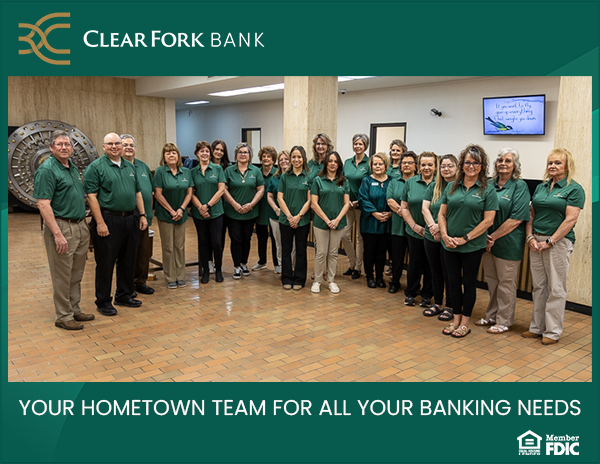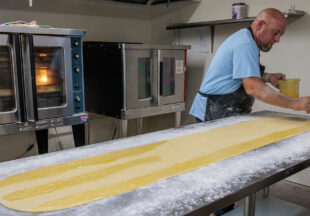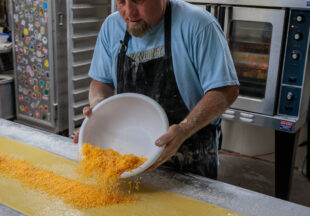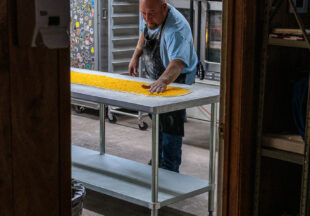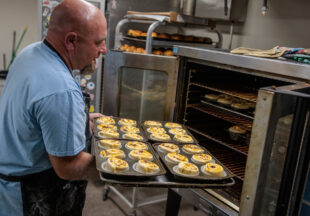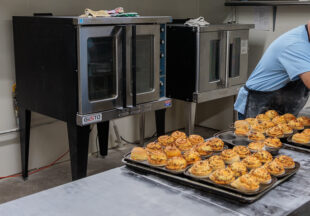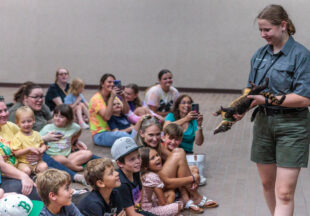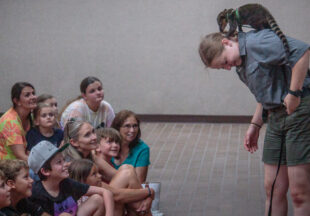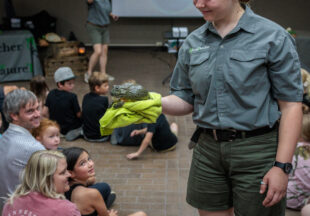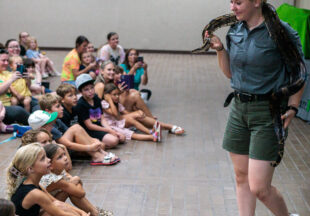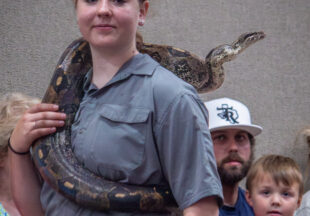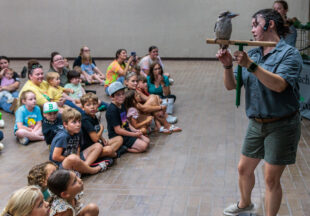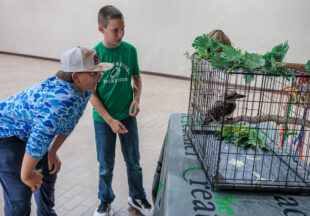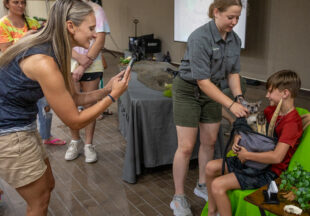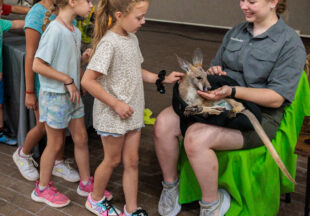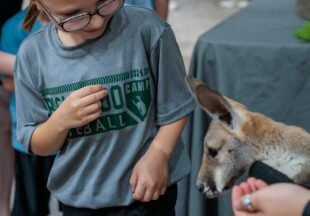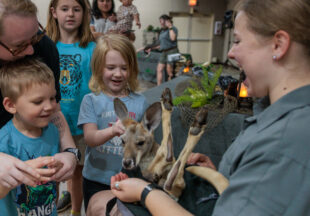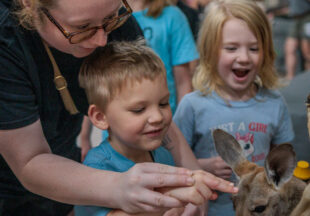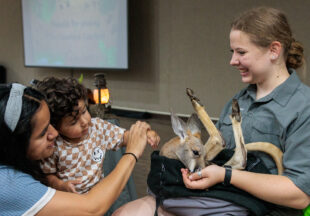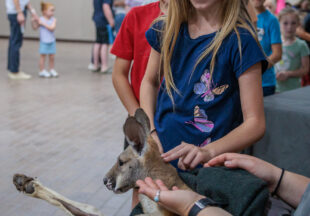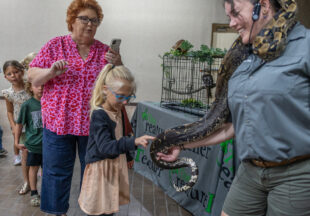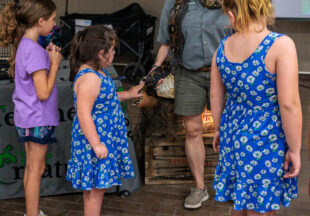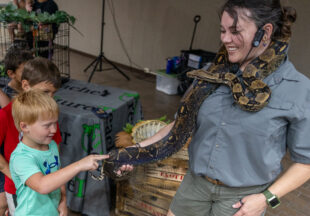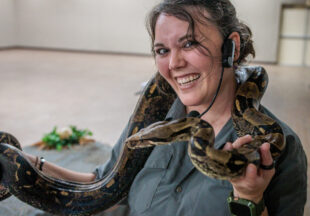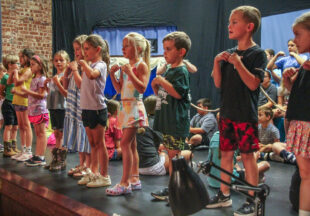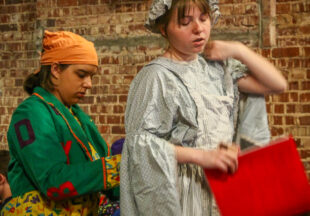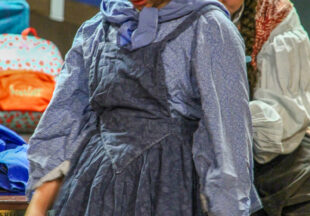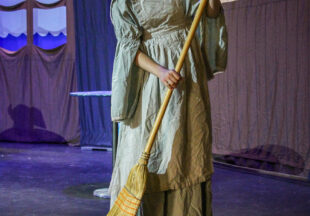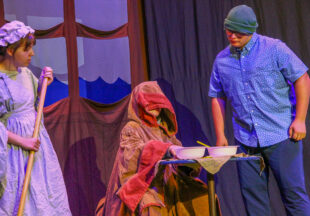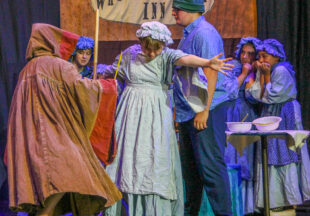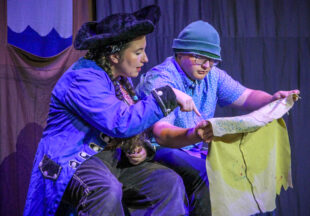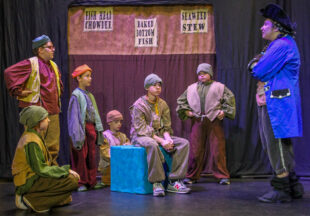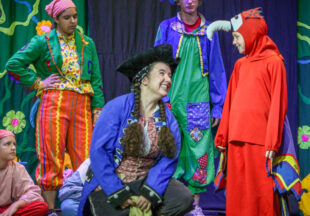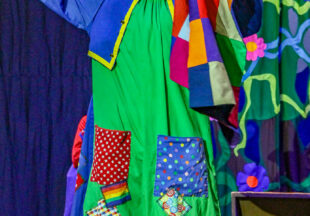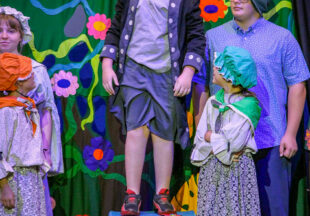BHS Class of 2024 gets lessons on money before heading out to real world
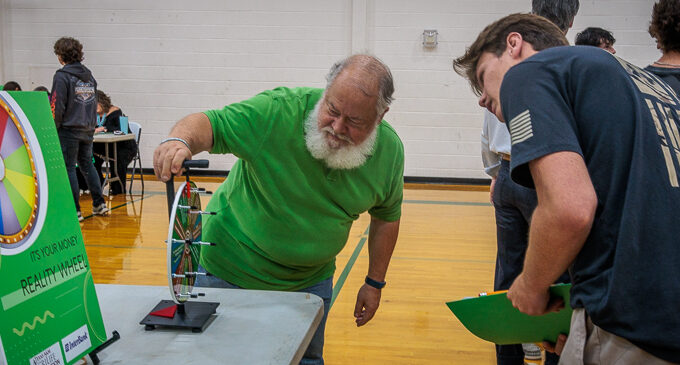
By Carla McKeown/Breckenridge Texan
From how to budget their money to how to write a check, Breckenridge High School’s Class of 2024 received some financial advice through the “It’s Your Money!” program before they graduated last month.
Previously known as the “Welcome to the Real World” program, “It’s Your Money!” was designed to teach high school students the skills they need to financially navigate the adult world. The local program, which was sponsored by Texas A&M AgriLife Extension and InterBank, in partnership with the high school, took place in the BHS auxiliary gym.
This was the third year for the program at BHS, which was coordinated by Stephens County Extension Agent Sumer Russell and Luke Grider, community bank president for InterBank.
At the beginning of the program, each participating student was randomly assigned an occupation with a specified monthly salary, as well as the amount they would have to pay in taxes and student loan. The program is being updated, and next year the students who participate in “It’s Your Money!” will get to choose their own occupation.

Luke Grider, community bank president for InterBank, works with Breckenridge High School students to balance their budgets in the “It’s Your Money!” program. Click here to see more photos from the event. (Photo by Tony Pilkington/Breckenridge Texan)
Then, they visited tables set up around the room, where they worked out their monthly budgets, based on their salaries and personal interests. At each table, a couple of advisers — community members, InterBank employees, local business representatives, etc. — helped them make the best choices.
The job spectrum included a variety of jobs with different levels of skills and education requirements. Additionally, there were some other random details for each student. For example, about 10 percent of the participants were designated to have a child that they were supporting. Some have college degrees.
After receiving their job and salary assignments, the students filled out an expenditure worksheet that came in the packet of information they got. They had to make choices, such as whether they wanted to live on a farm, in a town (below 10,000 population), in a city (10,000-50,000), in the suburbs (over 50,000) or in a central city (over 100,000 population). Other choices included what type of home they want to live in, the type of vehicle they want to drive, the type of groceries they would like to buy, and what they want to do for entertainment.
Then, they visited the tables to start making decisions about how to spend and save their money. At the housing table, they could choose between living in a rented apartment or house or buying their own home. If their original choice was too expensive for their income, they could team up with a classmate as roommates and split the bills.
At the transportation table, they decided what type of car they wanted to drive and worked out the payment plan for their choice. There were also tables for utilities, groceries and household expenses, entertainment, clothing, parenthood, insurance, pet ownership, and charitable giving.
Each table offered the students choices and the financial responsibilities of that choice. For example, at the Pet Ownership table, they could choose the type of pet they want and that choice determined how much it would cost them each month. A horse was budgeted at $323, a big dog at $65, a small dog at $32, and a cat at $35. Similarly, the clothing budget could be low-cost ($80 per month) or high-cost ($200 per month). There was also an expense of $25 for laundry supplies and dry cleaning.
Then there was the Reality Wheel, which each student spun to see what life would send their way. The items on the wheel were real-life type situations that adults deal with every day, such as “You are invited to a wedding,” which had expenses attached to it ($40 for the wedding gift). Other options were things like “You had a minor car accident — Pay the $250 deductible,” “You spill a drink on your laptop keyboard. Cost $100 to repair” and “A family member has a birthday. Spend $25 on the gift.” There were also some beneficial options, such as “Your income tax refund check arrives. Add $120 into your savings account.” And, “You have a garage sale and sell your old stuff. You earn $176.”
Once they were finished with their choices, the students then had to see how their budgets held up. If they had spent more than they earned, they had to go back to the tables and make different choices. If they couldn’t figure it out on their own, the financial adviser table, staffed by InterBank employees, offered advice.
Along the way, they learned skills such as how to balance a budget and a bank account, and how to write a check.
After the students finished working out their budgets, Dr. Jason Johnson, a finance specialist with the AgriLife Extension Service, talked to them about what they need to be successful in life. He told the students that the key to earning a higher salary is to have “knowledge, skills and ability.”
Johnson also encouraged the students to continue educating themselves throughout their lives. “You should always be looking to increase your knowledge, skills and ability,” he said.
Although he has a Ph.D. in agriculture economics from Texas Tech University, Johnson told the students that college isn’t the only path to education. He also mentioned apprenticeships and vocational training.
He also suggested that, in addition to a job that the students may work at, the students consider using their hobbies or other interests to create a second income via a “side hustle.”
“A side hustle is the way you bring more money in by embracing your nerdiness, figuring out a way to monetize your interests and your hobbies,” he said. “So whether you’re providing a service for somebody that saves them time or saves them money or just teaches them skills or the hobby you enjoy, think about how to take the things that you’re interested in and turn it into additional money coming into your house.”
Click here to see the Breckenridge Texan’s Photo Gallery from the “Welcome to the Real World” program.

Dr. Jason Johnson, a finance specialist with the AgriLife Extension Service, talks to Breckenridge High School seniors about what they can do throughout their lives to become wealthy. (Photo by Tony Pilkington/Breckenridge Texan)
Cutline, top photo: Volunteer Brian Kight checks out the Reality Wheel to see what real-life-type event the students have to add to their budget. (Photo by Tony Pilkington/Breckenridge Texan)




